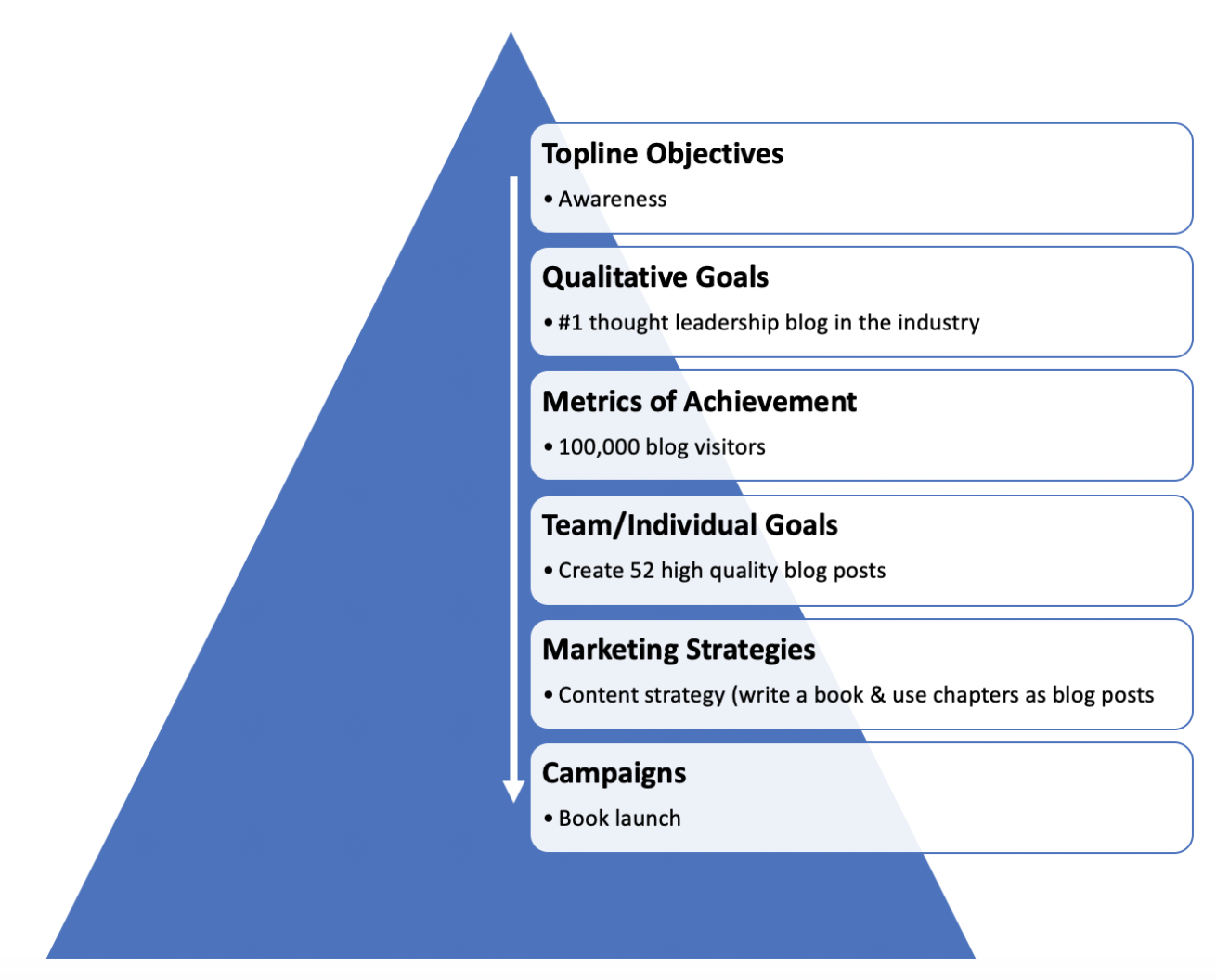9 Steps in the Marketing Planning Process

Marketing success can often feel like navigating through a storm. Whether you’re a CMO or a marketing operations manager, building a strategic marketing planning process that hits your targets and makes the most of your marketing budget is critical to ensure success.
But when you’re operating on a slim budget, it takes time to decide where to invest, especially when you can’t afford to waste resources to achieve business goals.
That’s why a good marketing plan isn’t just a plan—it’s a crucial guide. It’s carefully designed to steer your team, focus your efforts, and achieve genuine results.
This article is here to light your way, with a nine-step plan to a data-informed, goal-focused, and ROI-driven marketing plan.
What is a Marketing Plan?
Simply put, the definition of a marketing plan is a roadmap that outlines a business’s specific marketing strategy and the actions to be taken to achieve goals.
The marketing planning process takes that idea one step further, providing a thoughtful, step-by-step approach to address how to create a marketing plan. When executed properly, this process is the foundation of success for your marketing plan development.
There are plenty of benefits that establishing a marketing plan process can bring to an organization or business:
- Increased accountability. Each team member has a clear understanding of who is responsible for what.
- Team collaboration. Break down traditional silos and work together on common goals.
- Resource allocation. Ensure you know exactly how much time, money, and energy needed to achieve those goals.
- Performance management. Effectively measure marketing’s performance and understand its value to your organization.
9 Steps of the Marketing Planning Process
Marketing plan development doesn’t happen by chance. It takes a dedicated, ongoing effort to do well.
Here are the nine most important steps in any marketing planning process:
- Conduct a marketing audit – A marketing audit provides a foundation for planning decisions.
- Collect market research – Research external trends and the overall market landscape can help you understand your company’s current situation.
- Understand your audience – Get a full understanding of your audience’s behavior, motivations, and interests by building out personas, conducting consumer interviews, and gathering audience qualitative and quantitative data.
- Develop your positioning and messaging – Understand your brand against the market and how you compare to competitors.
- Set company and marketing goals – Develop marketing goals that are aligned with business goals.
- Determine your budget – Determine the budget needed to achieve the goals of your marketing plan.
- Develop marketing campaigns – Allocate your budget toward marketing campaigns within your marketing plan.
- Develop an implementation timeline – Before you deploy your marketing plan, set realistic milestones with stakeholders.
- Evaluate and make improvements – Evaluate the performance of your marketing plan and campaigns and make changes accordingly.
Let’s take a look at all nine steps in detail.

Step 1: Conduct a Marketing Audit
If you don’t know where you stand as a business today, you will not be able to build a marketing plan for tomorrow. That’s a major reason why a marketing audit provides a foundation for planning decisions.
The audit is the first step in the marketing plan process, providing a snapshot of where you’re currently at and the effectiveness of your marketing. When you conduct an audit, pull in data from the market, including historical marketing data, win/loss analysis, sales trends, team skills analysis, and budget impact.
Your findings from the audit can be modeled in a SWOT analysis.
Create a SWOT analysis
A SWOT analysis (strengths, weaknesses, opportunities, threats) is a study done by an organization to assess internal strengths and weaknesses and external opportunities and threats.
Conducting a SWOT analysis can help set the table for a marketing strategy to capitalize on your strengths and improve areas of weakness.
Gather historical marketing performance data
Your current marketing plan is a multi-channel endeavor.
Leverage data from different sources to provide insight into marketing performance at the marketing plan, campaign, and channel level.
Analyzing historical data is your chance to understand whether you have been hitting all of your tactical and strategic goals. If you have yet to hit your goals, this is your chance to determine why.

Step 2: Conduct Market Research
The second step in the marketing planning process is to conduct marketing research.
Researching external trends and the overall market landscape can help you understand your company’s current situation.
Where do you currently stand against the competition? Historically, have you improved or declined in performance and market share? There are four primary external data points to research:
- Economic trends
- Geopolitical issues
- The competition
- Customer intelligence (surveys)
You could research many others based on your business, so understand what makes you different and pull that information together.
Study the competition
Analyzing the historical market share and growth/decline among competitors in your industry can help you see a fuller picture of the industry and your organization’s place.
Remember, although you may find your company currently owns a particular market share, it wasn’t always that way. Newcomers that enter the market may take away some of the markets, and antiquated companies may go out of business.
Conduct online surveys
Consider creating a survey to send to select consumers.
Ask them to provide their input on the brand and how it is perceived. You may uncover some valuable information you would not otherwise get, and you may also find a disconnect between your marketing and what people think of your brand.

Step 3: Understand Your Audience
The third step of the marketing planning process is to understand your audience.
Marketing only works with an intimate understanding of your target audience and their pain, wants, or needs.
Your audience will evolve based on a variety of changes to both your business and customers.
- Build out personas
- Consumer interviews
- Gather audience data
- Understand buyer motivations
- Get a sense of buyer expectations
- Understand the buying cycle
Build out personas
Buyer personas help you build your ideal customer profile (ICP). They are representations of your buyer based on key traits.
Personas are meant to be detailed and should include buyer motivations, behaviors, triggers, frustrations, demographics, interests, and more.
In terms of a marketing plan, personas help better understand who you’re marketing to.
Many organizations develop personas, but fewer have updated personas based on new research. As a best practice, you’ll want to update your personas every year.
Gather audience data
In this step of the marketing plan process, you’ll want to understand audience data, including demographics, geographics, behavior, and psychographics. Your personas should include this data to truly understand where your audience is, who they are, what they do, and what makes them tick.
Consumer interviews
In addition to getting data on your audience, conducting in-person (or virtual) interviews can be helpful.
Consumer interviews provide qualitative context to your audience, motivations, behavior, and needs. Matching qualitative and quantitative data can put the pieces together to tell your brand’s story and how it’s perceived.
Understand buyer motivations
Buyer motivations refer to the factors influencing a consumer’s decision to purchase a product or service – from awareness to purchase.
Understanding what triggers people to buy your product or service and their pain points can play a huge role in creating the right messaging in your campaigns.
Get a sense of buyer expectations
It’s essential to get an understanding of the current expectations of buyers. Consumer expectations pertain to the pricing and quality of a product or service.
Ultimately, expectations play into pricing and brand positioning. Expectations and positioning should be mirrored in the messaging of campaigns in a marketing plan.
Understand the buying cycle
The buying cycle is a customer’s complete process when buying a product or a service. Optimizing your website for the buying cycle is critical — and be sure you offer top-of-funnel and bottom-of-funnel resources.
Here are the stages in a buying cycle:
- Awareness Stage: The buyer becomes aware of a problem or need.
- Consideration Stage: The buyer defines their problem and searches for options.
- Decision Stage: The buyer compares sellers and chooses the right one for them.
- Repurchase: when to problem or need arises again, the same process ensues.
In regards to the buying cycle for the specific products or services you sell, consider asking yourself the following questions:
- How long does the buying cycle typically take?
- How many marketing touchpoints are typically involved?
- How much education and top-of-funnel marketing are involved in ultimately getting them to convert?
Another consideration in the marketing planning process is the time it takes to convert a prospect into a customer. This is where sales teams should be involved with a marketing plan.

Step 4: Develop Positioning & Messaging
The fourth step in the marketing planning process is to develop your positioning and messaging.
Positioning is the ability to influence consumer perception and how it is distinguished from competitors. In a crowded industry full of competitors, knowing where your brand falls among competitors in the marketplace is important. Brand positioning is key. Ask, what is your unique selling proposition (USP) versus competitors?
- Refining your audience
- Segmentation
- Update messaging
Refining Your Audience
The research done to get a better understanding of your audience will never stop. Successful businesses have a deep understanding of their audience, and that comes with refinement.
As you continue to roll out your plan, you will uncover more insights about your target marketing and how to approach them.
Segment your audience
Segmenting your audience is a marketing tactic that identifies subgroups within a target audience.
Marketing segmentation creates subsets of your audience based on demographics, behavior, motivations, interests, and more. The segmentation process will help make targeted messages to reach better and engage with these groups.
Update your message (if needed)
Feel free to test and update your messaging, particularly for sub-segments of your audience. Tweak your messaging and how you solve the pain points of your customers and target audience.

Step 5: Set Company & Marketing Goals
How you measure success in marketing ultimately depends on your business goals. Creating marketing goals can be a daunting task. Here are a few tips to help you develop goals for your marketing plan.
- Align business and marketing goals
- Create a goals pyramid to assign ownership
- Determine KPIs needed
Align business and marketing goals
Your marketing goals should be based on overall business goals. With step 5 in the planning process, you must know how your marketing plan fits into broader business goals.
To determine this, you should ask yourself, “What is our company trying to achieve overall”? As a marketing expert, you should take what your company wants to achieve and align it with your marketing goals.
Create a goals pyramid to assign ownership
Poorly defined marketing goals can be the downfall of any marketing plan. Creating specific, well-defined marketing goals during the marketing plan process can help keep your plan on track.
When going through the goal-setting process of your marketing plan, you’ll want to use the goals pyramid for aligning your team

Determine KPIs needed to meet your goals
A Key Performance Indicator (KPI) is a measurable performance value over time regarding a strategic objective. KPIs are not the same as goals – the goal is the outcome, while a KPI is a metric tracked to work toward your goal.
Metrics are crucial for marketers. Determining the key marketing KPIs to track moving forward will give you insight into goal achievement. From general marketing KPIs to ones that fall under a certain campaign or marketing channel, tracking KPIs daily, weekly, monthly, or even annually will help your marketing team stay on track.

Step 6: Determine Budget
After you set marketing goals, you’ll need to do some financial planning to secure the required financial resources to achieve those goals. To measure the ROI of a marketing plan, you’ll need to know the exact amount of your budget.
With this step in the marketing planning process, we review tips on determining and using your budget for marketing plan success.
- Determine the budget to meet your goals
- Build agile budgets
- Manage your marketing spend
Determine the budget needed to meet goals
How much money is needed to meet or exceed your goals? This is a question that marketing executives and team members should be asking themselves. The first step is to set your goals and then build a plan to achieve them.
Your campaigns and channels listed in your marketing plan will provide your budget requirements. Build your marketing plan first, then tell finance what resources you need to achieve the goals.
Take your time with finance, giving you your marketing budget at the beginning of the year, or you risk not having the financial means to execute your plan.
Build agile budgets
In addition to agile marketing plans, marketers should practice agile financial budgeting. Moving funds around as changes occur in the business over the year starts with clear visibility of your budget at all times.
In the event marketing efforts get derailed, agile marketing budgets provide flexibility and prepare marketing teams for different scenarios.
Manage your marketing spend
As your marketing plan is executed, responsible marketing teams closely track their budget. When a budget is overspent, underspent, or mismanaged, it can cause many issues in the execution of marketing plans, including P&L issues.
How can you make sure your budget is well-spent and well-priced? Planful’s marketing budget management software ensures you are spending appropriately and appropriately.
Keep a close eye on your Budget Burn Rate (BBR) since this can help forecast your spending velocity to protect you from going under or over budget.

Step 7: Develop Marketing Campaigns
Once the budget is set, the next step in the marketing planning process is to allocate your budget toward marketing campaigns within your marketing plan. Here are a few tips to keep top of mind when developing marketing campaigns.
- Select campaigns that deliver the greatest impact
- Leverage past campaigns
- Allocate budget for campaigns
Select campaigns that deliver the greatest impact
Determine which campaigns are going to help you reach your marketing goals. With these campaigns, you’ll want to leverage more resources. You may also want to prioritize launching the plan first.
Leverage past campaigns
The analysis of previous campaigns can help you develop new campaigns moving forward. Why was a past campaign successful or unsuccessful? You can use this data to pave the way for which campaigns to prioritize in the context of the new marketing plan you created. Use all the data from past campaigns to guide the development of a marketing campaign.
Allocate budget for campaigns
Like plans, marketing ROI is measured for specific campaigns. The budget allocated toward these campaigns is based on the expected ROI. Learn more on marketing budget allocation best practices.

Step 8: Develop an Implementation Plan & Timeline
Goals are established, a marketing plan is developed, and budgets are set – so what’s next in the marketing planning process? It’s time to shift your focus to an implementation plan.
Marketing implementation involves assigning tasks to different team members to execute the marketing plan created. A marketing plan is only as good as its implementation. Here are some tips on how to implement your marketing plan.
Determine the length of a plan
A good starting point for your implementation plan is the length of time. The length of an implementation plan will depend on several factors – your budget, projected ROI, and marketing plan’s goals. Within the plan, you will also have to determine the length of time to implement marketing campaigns. Sit down and plan out a realistic start and end date for each campaign.
Know the team members involved (and responsibilities)
Team members will have select roles for the marketing plan and activities. Before launching a marketing plan, knowing team members’ roles is important.
For instance, who strategizes? Who oversees the campaigns? Who is the project manager? Who is the subject matter expert of a particular task, campaign, or channel?
Determining the roles and responsibilities of each team is an integral part of the marketing plan process because it will eliminate confusion, improve production, and create accountability.
Create a project management plan
How can we make sure we hit our marketing plan timeline? As the plan unfolds and is carried out by team members, organizations must stay on top of activities and marketing activities.
Ongoing project management helps ensure that the right people complete their tasks on time and budget.

Step 9: Evaluate & Make Improvements
Let’s face it – although we strive for perfection, marketing plans will never be perfect. And that’s okay!
The final step in any marketing planning process is to evaluate your marketing efforts and make improvements.
During this time, you must evaluate the performance of your marketing plan and campaigns and make changes accordingly. Without constant adjustments and re-evaluation, a marketing plan will not be as effective as possible.
- Evaluate marketing plan performance
- Hold status meetings
- Identify what’s working
- Justify your changes
- Measure plan ROI
- Make sure marketing attribution is set accurately
Evaluate marketing plan performance
During this step in the marketing planning process, you should evaluate your marketing plan.
When evaluating the long-term outlook of marketing campaigns or activities within a marketing plan, you have 3 options:
- Capitalize on what’s working by investing more capital and resources.
- Stop or diminish resources for tactics that are not working.
- Update tactics that are not working based on finding.
Hold status meetings
Holding status meetings provides a chance to present the KPIs and results of a marketing plan. These meetings benefit the rest of your team, the C-level roles, and other stakeholders. Tell a story of the performance of your marketing plan and highlight specific success stories and failures.
Identify what’s not working
As your marketing plan unfolds, you will have the data available to know which campaigns are working and which are not.
However, going beyond the data, you should know why things are not working. Uncovering why a campaign or channel is underperforming is important to make the changes needed to get back on track.
Justify your changes
Once you understand why a marketing channel or campaign is not working, it’s time to recommend a change. Knowing the reason for adjusting your plan will help justify the proposed updates to your team or management.
Measure your return on investment
Once changes have been made, track marketing ROI from that point forward. Using annotations in tools like Google Analytics and other marketing platforms can help track the impact of a campaign.
Make sure your marketing attribution is accurately set
In today’s age, a marketing plan consists of several multi-channel strategies. That speaks to the importance of marketing attribution, which refers to analyzing consumer touchpoints on their path to purchase.
Planful makes the marketing planning process simple
Today, too many marketing teams have great intentions but often execute ideas without a solid plan. Most fail as a result.
A well-thought-out, realistic, and executable marketing plan substantially affects whether you achieve your goals.
Planful offers a single source of truth for marketing teams of all sizes to house operational data, track goals, and monitor performance in one central space — giving marketing leaders a perfect arena to execute a marketing plan.
Before you go, remember these 3 things…
- A strong marketing planning process creates clarity fast by turning scattered ideas into an aligned, goal-driven marketing plan.
- Data should guide every step so your marketing strategy, budget, and campaigns stay rooted in performance insights.
- Marketing plans succeed when they evolve. Evaluate performance often and adjust your strategy before results slip.
Streamline your entire marketing planning process in one place
Book an interactive demo to see Planful in action, or get in touch to learn how Planful can help you achieve your business goals.
FAQs
What are the main steps of the marketing planning process?
The marketing planning process typically includes auditing your current state, researching the market, defining your audience, setting goals, building your marketing plan, and evaluating performance. These steps help ensure your strategy is structured, measurable, and aligned with business goals.
Where do I get started in the marketing planning process?
Start with a marketing audit to understand where you are today, then gather data on your market, audience, and past performance. From there, you can set goals, build campaigns, and allocate your marketing budget.
What tools can help simplify the marketing planning process?
Marketing plan builders, templates, and budgeting platforms can streamline the process by centralizing data, timelines, and performance metrics. Planful gives marketing teams a single platform to build plans, manage budgets, and evaluate results with real-time performance data.
Latest Posts
Blogs
Interviews, tips, guides, industry best practices, and news.
